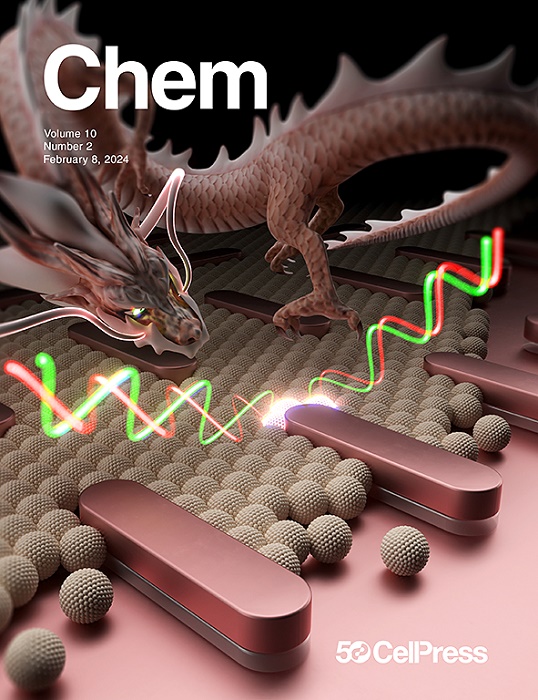Directional self-assembly of organic semi-type core-shell microwires for programmable visible-to-near-infrared waveguiding conversion
IF 19.1
1区 化学
Q1 CHEMISTRY, MULTIDISCIPLINARY
引用次数: 0
Abstract
Organic topological structures integrating multi-color emission and waveguide for optical interconnects are of considerable significance in both scientific research and optoelectronic applications. However, limited success in organic near-infrared (NIR) emitters and difficult manipulation of intermolecular interactions lead to a severe restriction of the photon waveguide for optical communication. Herein, we have purposefully designed dibenzothiophene-based charge-transfer (CT) cocrystals with tunable NIR emission from 710 to 840 nm via finely increasing their aggregation closeness and CT interaction intensity. The controlled molecular stacking evolution from a loosely to a tightly mixed stack achieved a desired narrowed optical band gap of 1.8 eV. Furthermore, these CT cocrystals with a low optical loss coefficient of 0.077 dB/μm at 840 nm were introduced into NIR-emissive semi-type core-shell heterostructures, which realized effective energy transfer with a high conversion efficiency of 40.5% between visible and NIR emission. This strategy paves the way toward precise processing of photons with transmission wavelengths for integrated optoelectronics.

用于可编程可见光到近红外波导转换的有机半型核壳微线的定向自组装
集成多色发射和波导的有机拓扑结构在光学互连中具有重要的科学研究和光电子应用意义。然而,有机近红外(NIR)发射器的有限成功和分子间相互作用的难以操作导致光子波导用于光通信的严重限制。在此,我们有目的地设计了基于二苯并噻吩的电荷转移(CT)共晶,通过精细地增加它们的聚集紧密度和CT相互作用强度,可以在710到840 nm之间调节近红外发射。控制分子堆叠从松散堆叠到紧密混合堆叠的演变,实现了期望的1.8 eV的窄光学带隙。此外,在840 nm处,这些光学损耗系数为0.077 dB/μm的CT共晶被引入近红外发射半核壳异质结构中,实现了可见光和近红外之间有效的能量传递,转换效率高达40.5%。该策略为精确处理具有传输波长的光子铺平了道路,用于集成光电子学。
本文章由计算机程序翻译,如有差异,请以英文原文为准。
求助全文
约1分钟内获得全文
求助全文
来源期刊

Chem
Environmental Science-Environmental Chemistry
CiteScore
32.40
自引率
1.30%
发文量
281
期刊介绍:
Chem, affiliated with Cell as its sister journal, serves as a platform for groundbreaking research and illustrates how fundamental inquiries in chemistry and its related fields can contribute to addressing future global challenges. It was established in 2016, and is currently edited by Robert Eagling.
 求助内容:
求助内容: 应助结果提醒方式:
应助结果提醒方式:


